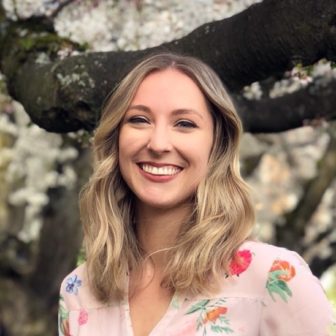
Jono Erasmus/Shutterstock
.
An ancient parable describes a group of people who come across something unknown to them — an elephant. Fascinated, each person begins investigating the elephant, choosing one aspect that captures their attention. Without talking to each other, each of them believes they know what an elephant is, when in reality they are only describing the part they see, such as a tusk or tail.
Caseworkers in child welfare are set up to fall into this pattern. They are told to figure cases out without taking time to consult with the people who understand all the different parts of a child’s “elephant.” Every child has a base of support, whether that support looks like extended family, a therapist or a neighbor. Those players will largely step in to support the child when asked — but they won’t step in if they aren’t invited. To look at the bigger picture of child welfare, we need to create structures that support collaboration in families, communities and systems.

Sierra Wollen
Some child welfare leaders have found ways to collaborate despite the siloed structure of the child welfare system. The solution they offer is a simple one: Bring all the people who have an impact on a child’s life into the same room and have them talk to one another.
We’ve all heard the saying, “It takes a village to raise a child,” but child welfare courts rarely include the whole village in the conversation. Standard court processes are adversarial, since family disputes are mitigated by judges, can be punitive to birth parents and historically have promoted competition among the invested people rather than teamwork and cooperation.
By contrast, many tribal communities understand and skillfully embody the espoused value of centering children and including community in their family court practices. Peacemaking, for example, is a consensus-based technique that native communities have practiced for generations. Peacemaking circles include direct and extended family members, community members and leaders, as well as one or more facilitators who lead an open discussion about how to best resolve family conflicts in the best interest of the child.
According to Cheryl Fairbanks (Tlingit/Tsimpshian), executive director of the Native American Budget and Policy Institute, peacemaking is a consensus process that includes ground rules where all parties explicitly agree to “keep the child at the heart of the circle.” Facilitators invite participants to share memories about their childhood or the child at the beginning of sessions in order to set a “sacred space” in which participants are willing to be vulnerable and share openly in the best interest of the child.
Christy Chapman, a member of the Pueblo of Zuni, facilitates peacemaking circles as an attorney for the Native American Budget and Policy Institute. One circle she led involved two Native American sisters who became estranged after one lost custody of her child due to alcohol addiction, leaving her sister and husband to care for their niece.
Chapman says through peacemaking and “shar[ing] their stories, you got to the root cause of why the sister was drinking.” They discovered her alcoholism was a coping mechanism for dealing with the death of their mother. Peacemaking allowed the aunt’s husband to share his own struggle with and process of overcoming alcoholism and how he wouldn’t have gotten through it without his wife’s support.
Through this, the aunt realized she had not supported her struggling sister as she supported her husband and that nobody can get through addiction without support. Chapman was initially skeptical about the process. However, after the circle discussion, “the two sisters who in the beginning were ready to hurt each other and pull each other’s hair were hugging and crying, and I wanted to cry because it was a complete success.”
2 other methods
While peacemaking may not be culturally relevant to some children in the child welfare system, team decision-making (TDM) is a related framework that serves to diffuse an “agency versus family” dynamic. Team decision-making allows key stakeholders in a child’s life to participate in problem solving processes. Peacemaking and TDM both create structures to facilitate family and community collaboration and ensure the whole child is centered in discussions.
The same principle of creating collaboration structures holds true for the child welfare system as a whole. Our current system is siloed, with each system player focused on one single piece of the elephant. Since structures aren’t in place to force key system players to talk to one another, they generally don’t. Cross-system collaboration is a feasible way to expand families’ resource pools, promote resilience and healing, and build social capital.
Putting collaborative structures in place is also cost effective. As an example of the types of cost savings agencies can expect, the Annie E. Casey Foundation found that the mere presence of a caregiver at team decision making meetings reduces the likelihood that a caseworker will recommend a placement change to congregate care by 40%. Congregate care is expensive — nationwide, the average cost for congregate care placements is $125 per day, compared to just $18 per day for most standard foster care. TDM meetings also significantly reduce the average length of time children spend in the system, saving child welfare agencies precious resources.
Despite these benefits, effective cross-agency collaboration is not the norm. Ezra Spitzer, executive director of NMCAN, an organization that partners with foster youth to advocate for child welfare policy change, explains: “There’s not a good history of collaborating in child welfare. There’s no built muscle to do it. You have to put in place some structures and infrastructure to make sure it happens, and that’s hard work.”
NMCAN has filled this gap by bringing child welfare stakeholders into the same room to talk through cases and, in the process of those conversations, identify areas where systems are not setting kids up for success.
“We convene a group called Community Connections that brings providers together, creating and fostering coordination of services through an authentic youth lens,” Spitzer said. “Often we have the systems conversations at the top, but this group consists of front line staff from child welfare, GED providers, people from the city, people from youth shelters, and youth themselves. They do it through a case lens but they also sometimes shift broader systems conversations.”
By simply carving out the time for stakeholders to talk to one another, case decisions and policies are more responsive to the actual needs of children.
In light of constrained child welfare budgets and the current COVID-19 pandemic, family, community and cross-system collaboration is more important than ever. Perhaps a silver lining of these unprecedented times is a shift into systematizing cross-agency collaboration. Spitzer notes the New Mexico child welfare system is moving toward a more collaborative approach to cope with the effects of COVID-19.
“COVID-19 has forced the department to get creative and allocate their resources differently, potentially de-siloing CYFD and juvenile justice,” he said. “I definitely support the de-siloing; it’s time for the department to look at transition-aged young people, period.”
In a time of scarcity and severe need, we can create structures that allow families, communities and systems to come together and see the entire elephant and the whole child. Peacemaking, team decision making and cross-systems collaboration offer a way through, together.
Sierra Wollen, MSW, is a research and policy consultant with Partners for Our Children, University of Washington School of Social Work.
Yasmeen Elkordy, B.A., Angelique Day, Ph.D., MSW, and Nicole Sadow-Hasenberg, MPA, Partners for Our Children, University of Washington School of Social Work contributed to this column.


























